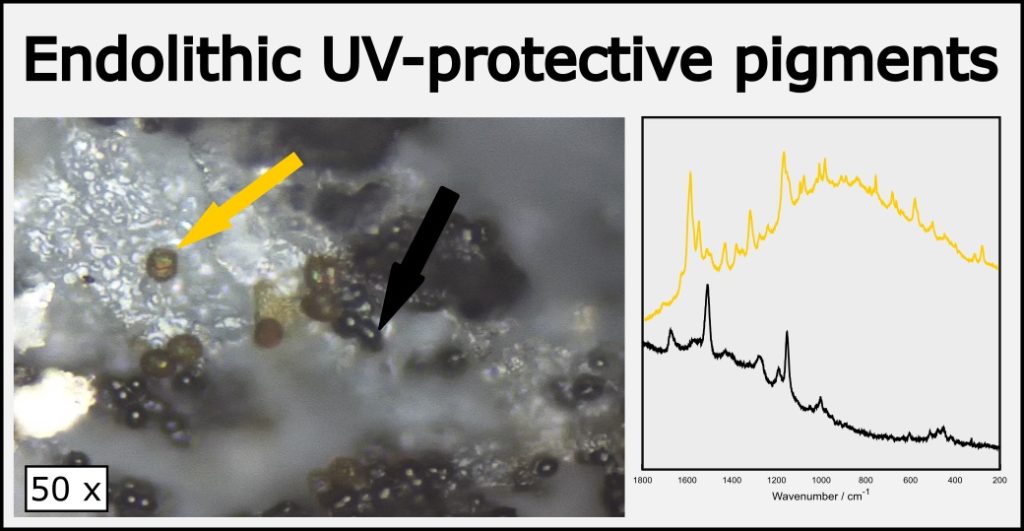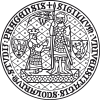
New paper reports groundbreaking findings on the distribution of non-carotenoid pigments in gypsum endoliths. In the study, Raman microspectrometry was used for analysis of UV-protective pigments of dark-pigmented endolithic colonizations in gypsum outcrops from Sicily, Poland and Israel. Colonized samples were investigated using 445-, 532- and 780-nm excitation lasers. Scytonemin and gloeocapsin were detected at all studied sites. Major Raman signatures of scytonemin were detected at 1593, 1552, 1438 and 1173 cm−1. Gloeocapsin shows characteristic Raman bands similar to anthraquinone-based parietin of lichens: at 1665, 1575, 1378, 1310 and 465 cm−1. Scytonemin and gloeocapsin are highly specific for cyanobacteria and can be thus used as biomarkers for certain taxa of cyanobacteria in geobiological and astrobiological studies. Detection of such pigments by Raman spectroscopy combining three excitation wavelengths allows gathering more information about the composition of endolithic consortia in their natural habitats using fast and non-invasive methods.
Němečková K., Culka A., Němec I., Edwards H. G. M., Mareš J., Jehlička J. (2021): Raman spectroscopic search for scytonemin and gloeocapsin in endolithic colonizations in large gypsum crystals. Journal of Raman Spectroscopy 52, 2633. (DOI)








